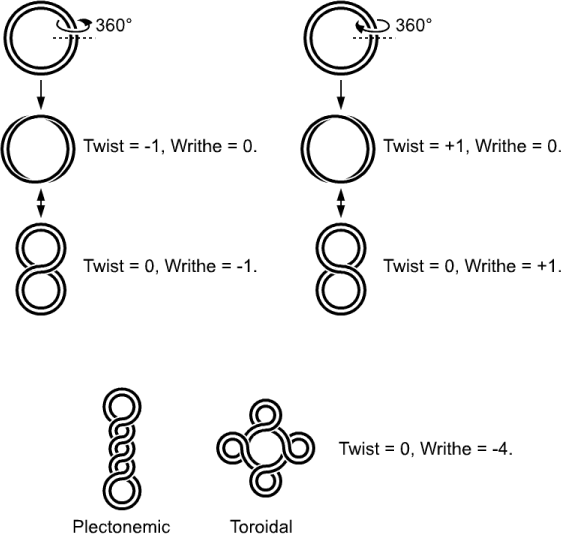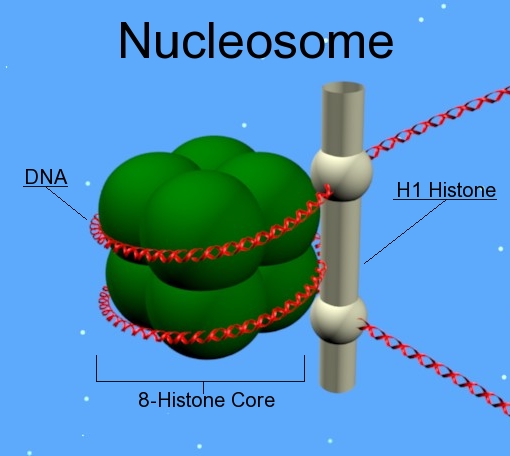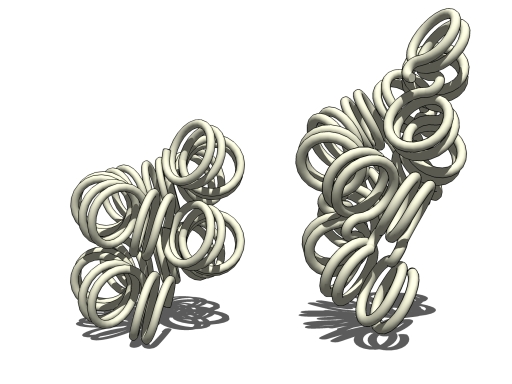
Organisms more complex than viruses (which are essentially non-living) face a similar problem of fitting their genomes into the space available within their cells.
Prokaryotic organisms such as E. coli often have their DNA arranged in circular structures called plasmids. While a single circle still might not fit into a cell, with the help of other proteins, this plasmid can be twisted into supercoils as shown below.

[Some basic types of DNA supercoiling. Image courtesy of Wikipedia.]
Eukaryotic organisms such as human beings split their DNA into several pieces (chromosomes) that are stored within the cell's nucleus as opposed to one continuous plasmid floating freely throughout the cell. Within each chromosome there is a great deal of structure, but at the most basic level within the chromosome, DNA is coiled around proteins known as histones. Perhaps unsurprisingly, histones have been shown to have a large amount of positive charge on their surface, which may help negate some of the energy cost of bringing negatively charged DNA close to itself.

[DNA being wrapped around a histone core and capped by the H1 histone protein. Image courtesy of Wikipedia.]

[The progression from simple double-stranded DNA being wrapped around a single histone to an entire chromosome. Image courtesy of Wikipedia.]
Of particular interest, if only because of the visual similarity to DNA packed in a capsid, the loops of chromatin that comprise the chromosome form supercoils themselves.

[Image courtesy of Wikipedia.]
While this is only a very brief overview of some of the other aspects of DNA packing in biological systems, we have hopefully convinced you that DNA packing in complex organisms shares many similarities with DNA packing in a capsid. As such, many of the same physical approaches we have used to examine packing in a capsid may be adapted and applied to plasmids and chromosomes as well.